XLR8R’s Best of 2013: Gear
The Gear section has quickly become one of the most popular parts of XLR8R, and […]
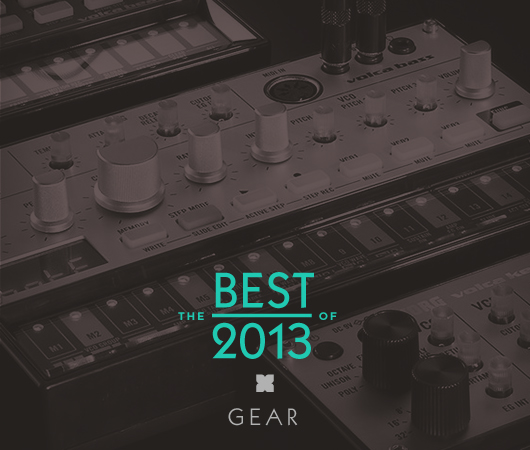
XLR8R’s Best of 2013: Gear
The Gear section has quickly become one of the most popular parts of XLR8R, and […]

The Gear section has quickly become one of the most popular parts of XLR8R, and we like to think that’s because many of our readers are as interested in the tools for creating music as they are in the music itself. Whatever the reason may be, our In the Studio, Artist Tips, and From Studio to Stage features, as well as the assorted gear reviews, continue to dominate XLR8R‘s publishing schedule, so we figured that gear coverage should make it into our Best of 2013 content as well. As such, we’ve put together a countdown of our five favorite pieces of hardware and software that appeared throughout the year; if we’ve calculated correctly, there’s a good chance that these tools will be shaping the sounds of 2014 and beyond.
5. Elektron Analog Four
Despite the ever-growing proliferance of software synths and sound-sculpting iPad apps, many producers still rely on the tactile response that only hardware can provide. This year, Swedish boutique instrument maker Elektron released the latest in its line of desktop electronics with the Analog Four, a synthesizer that marries an analog, four-voice engine with the extensive sequencing capabilities the Swedes are renowned for. The Analog Four includes rich effects and gives users the possibility to communicate with other gear via MIDI, CV, DIN, and USB connections, making it ideal as the centerpiece of a home studio. Though the synth has already racked up a slew of acclaim, Elektron has already announced the brand-new Analog Keys, a feature-packed, 37-key synthesizer that makes use of Analog Four’s sound engine and provides even more tweakability for live use. Leo Maymind
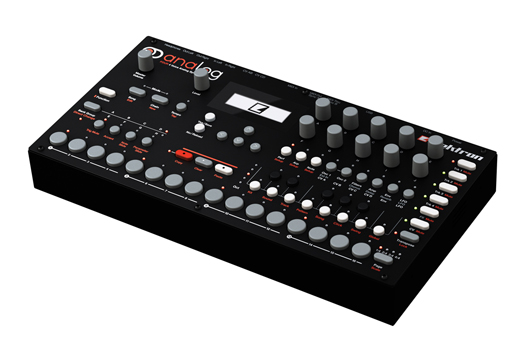
4. Logic Pro X
Before Logic Pro X arrived, there was a lot of talk about Apple wanting to gear its flagship DAW more towards GarageBand users or, in other words, those who merely dabbled in production as a half-hearted hobby and not as a serious passion or career. This, however, did not turn out to be the case (although there admittedly are a few new features that seemed to be aimed at that crowd), and when the dust settled, Logic X proved to be a welcome improvement on the professional audio program many electronic artists had come to know and love over the years.
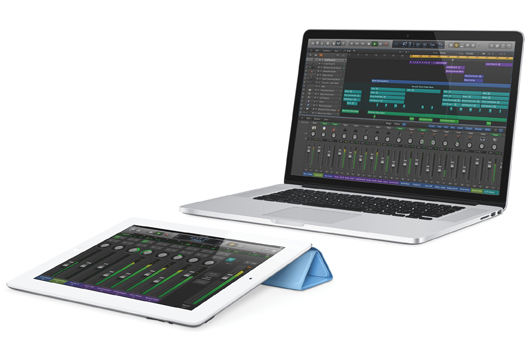
Aside from adding some useful new features and intriguing sound generators, the bulk of what made Logic X a success was the retooling of its GUI and the added availability of iPad remote control, both of which made for a more fluid workspace within the program. In a word, Logic X was just smarter than its predecessor. The fact that Apple found a way to package the retooled program as a $199.99 download made it an essential update for existing Logic users, and a serious consideration for those looking to expand the canvas upon which they make their productions. Glenn Jackson
3. Native Instruments Traktor DJ App
German software giant Native Instruments has long since secured its stake in the world of digital DJing with the ubiquitous Traktor software, but this year, NI upped the ante by introducing a slimmed down version of Traktor built for the iPad. Though many DJs thumbed their noses at the idea of a $20 app replacing their prized pair of 1200s, the novel implementation of Traktor DJ was a big step towards the democratization of DJing. Eschewing the dual deck view of the desktop version, Traktor DJ displayed each track as a horizontal waveform, allowing the user to take advantage of the iPad’s multi-touch surface by grabbing loops live, creating cue points on the fly, and using a multitude of EQ, FX, and filter functions. Further adding to the app’s usability was its tight integration with a selection of NI’s DJ controllers—including the new Kontrol Z1 and the popular S2 and S4 decks—and the ability to work as a third deck when paired with the full version of Traktor. Though a setup using the Traktor DJ app couldn’t exactly replace a proper turntable/CDJ/mixer combo, it nonetheless offered a viable and dynamic option for nascent DJs and any mixmaster who’s always on the go. Leo Maymind
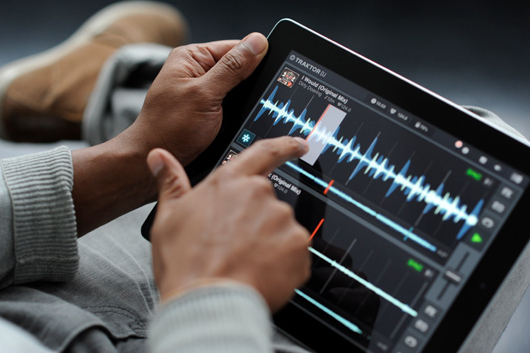
2. Korg Volca Series / MS-20 Mini
More than any other gear company this year, Korg just seemed to “get it.” Granted, it can sometimes feel like there’s a new synth or controller claiming to “change the way you make music” every other week, but Korg’s success in 2013 wasn’t about overhauling producers’ workflow, but rather supplementing it with focused tools that came in compact and—best of all—affordable packages. The two primary examples of this were Korg’s relaunch of its legendary analog synth, the MS-20, as the MS-20 Mini and the introduction of its Volca series of micro-synths and grooveboxes (pictured above).
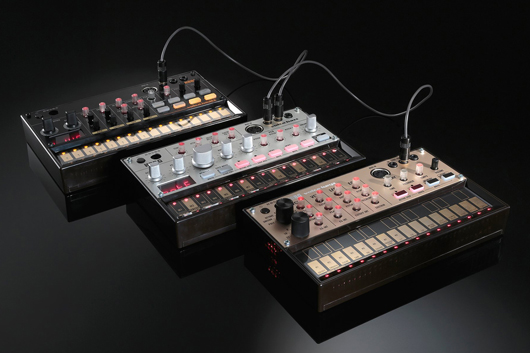
In the case of the MS-20 Mini, Korg answered the growing demand to revitalize one of its flagship units, not by simply slapping the name onto some barely related new unit, but by putting together the MS-20’s original designer with a new team in order to create a hybrid synth that remained faithful to its predecessor while also including updated features vital to modern studios. Furthermore, Korg’s three-piece Volca series made great strides towards putting the power of analog synthesis in the hands of those who could not afford more robust units. Recognizing that most producers already have the components necessary to control and play a synth, Korg’s Bass, Keys, and Drums units offered what is harder to make on one’s own: the actual electronic guts that produce the analog waveforms we all crave. With most at-home producers pressed for time, space, and cash, the Volcas offered a smart and attainable entry point into the analog world. Glenn Jackson
1. Ableton Live 9 / Push
In its rise to the top of a perennially crowded category, Ableton Live has become many musicians’ DAW of choice since its debut in 2001. This year was a big one for the company, which released not only the newest iteration of its software in Live 9, but also the first official Live hardware controller designed in conjunction with the program, Push.
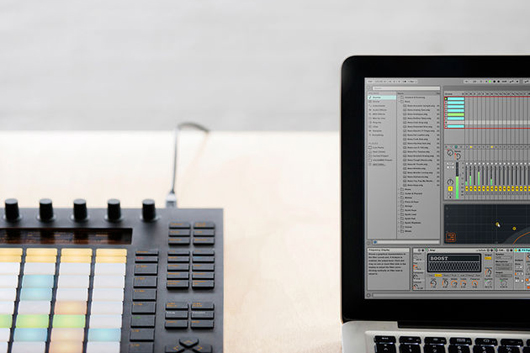
At its heart, Push is a device built for musical composition. The 64 input pads can be played like a proper instrument, in a way that the traditional 16 cannot; the brilliant white and blue LEDs indicate the user’s position in the scale when writing melodies, and provide plenty of room for creative expression. Add a Drum Rack, and both a series of pad triggers and an interactive step sequencer are simultaneously incorporated, while moving a finger along the touch strip navigates through the array of drum sounds. In many ways, Push goes beyond what we’ve seen from hardware controllers and a new approach to melody and song structure. Furthermore, everything generated with Push is integrated into Live in a way that’s tough for plug-ins to match. The beautiful, minimalist hardware is built like a tank, and provides the best entry point yet to physically interfacing with the deservingly ubiquitous Ableton Live. Evan Shamoon
XLR8R’s Best of 2013 coverage will continue through the end of this week, so check back each day for additional year-end round-ups. In the meantime, don’t forget to take a look at the other Best of 2013 pieces we’ve posted already:
XLR8R’s Best of 2013: Top Downloads (100 – 81)
XLR8R’s Best of 2013: Top Downloads (80 – 61)
XLR8R’s Best of 2013: Top Downloads (60 – 41)
XLR8R’s Best of 2013: Top Downloads (40 – 21)
XLR8R’s Best of 2013: Top Downloads (20 – 1)
XLR8R’s Best of 2013: Features
XLR8R’s Best of 2013: Podcasts
XLR8R’s Best of 2013: Labels
XLR8R’s Best of 2013: Tracks (50 – 26)
XLR8R’s Best of 2013: Tracks (25 – 1)
XLR8R’s Best of 2013: New Artists

